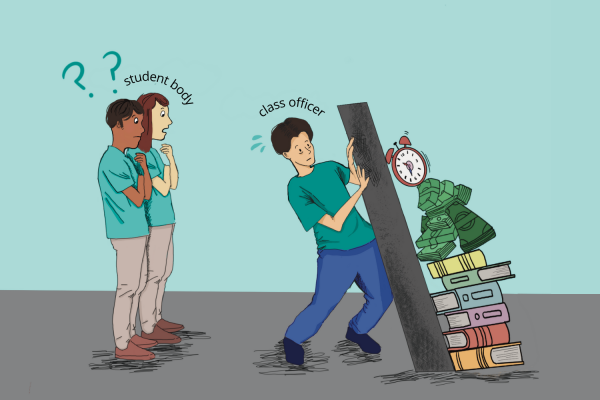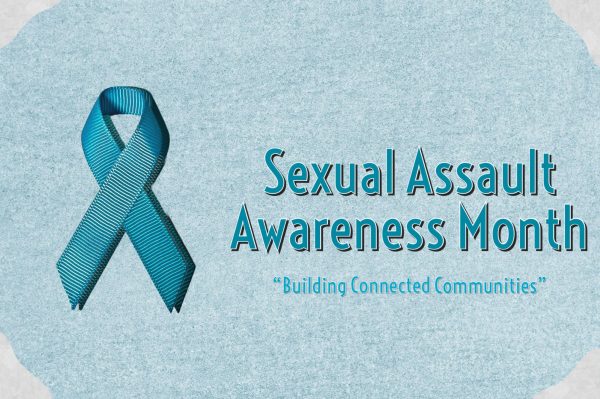Opinion: Violence against BIPOC needs to stop
April 22, 2021
Once again, the United States is in the news for yet another murder of a black man at the hands of a police officer.
It is a narrative our country has grown all too familiar with — a police officer pulls over a person of color and the next thing we know, death is plastered all over the news and social media. These deaths are usually labeled as an “accident” or are lamely “justified” because the person was resisting arrest.
Let’s say that Potter genuinely wanted to pull her taser and not her handgun, there are still some logistics that make zero sense.
— Op-Ed Editor Rachel Laposka
On April 11, Daunte Wright, a black male, was pulled over by Minneapolis police officer Kim Potter on accounts of an expired license plate and an air freshener hanging from his rearview mirror. What should have been a routine traffic stop resulted in Wright’s death at the hands of Potter.
Potter insists that the shooting was an accident, making claims that she thought she had pulled her taser to subdue Wright. An officer who has been on the police force for 26 years cannot tell the difference between a taser and a gun.
Let’s say that Potter genuinely wanted to pull her taser and not her handgun, there are still some logistics that make zero sense.
When training, officers are taught that their handgun holster will be on their dominant hand side and their taser will be on their non-dominant hand side. It is possible that Potter accidentally reached for her gun out of habit, but that raises a whole new issue. Why would an officer resort to violence at a traffic stop?
Aside from the basic police training, there are some distinct differences between a taser and a handgun. Weight is the biggest thing that I feel should have stood out to Potter. The material of a taser is primarily plastic, while a handgun can be completely metal with a little bit of plastic built-in.
Plastic and metal are drastically different in weight, which would make a taser and a handgun distinguishable by weight alone.
Wright’s untimely death is not the only one that has been amplified in the media as of late. On March 29, 13-year-old Adam Toledo was fatally shot by the Chicago police.
Moments before the shooting took place, records state that shots were reported in Little Village on the West Side of Chicago — the primarily Latino community where Toledo was killed.
As soon as [Toledo’s] hands were in the air, Stillman fired a fatal shot.
— Op-Ed Editor Rachel Laposka
Reports say that Toledo was with 21-year-old Ruben Roman prior to the shooting. Roman was shooting at a passing car when the police arrived. Once the older boy was apprehended by the police, Toledo began running.
Officer Eric Stillman caught up to Toledo and began shouting at the young boy to show his hands. Police bodycam footage shows Toledo throwing what appears to be a gun behind a gap in the fence before he put his hands up. As soon as his hands were in the air, Stillman fired a fatal shot.
Adam Toledo was 13-years-old. He had his entire life ahead of him. He was robbed of his future for complying with the police, and for what? Because he was Latino?
If we compare the arrest statistics of white men to that of colored men, you would find that the two groups are treated drastically differently.
When the shooter in question is a white male, the media is more likely to focus on his positive attributes, painting him in a light that allows him to appear like the victim. When a person of color is the shooter, the media will paint him as the villain with no exceptions.
The media needs to remove racial biases from their stories. These biases endanger entire races of people, painting them as the villain regardless of the situation. Next, we need to rewrite the narrative falling into the hands of the police force.
It starts with education. More extensive training is needed to become a police officer. With most agencies, the highest education required to become a police officer is a high school diploma or a GED.
Potential police officers should not display any racial biases. Stricter mental evaluations, intense training, and frequent check-ins regarding police policy will help.
Officers need to be held to higher standards so our country can avoid tragedies like Daunte Wright and Adam Toledo.
The force’s motto has always been “Protect and Serve,” but who exactly are they protecting and serving when their motto only falls skin-deep?
This story was originally published on The Prowler on April 21, 2021.



























![IN THE SPOTLIGHT: Junior Zalie Mann performs “I Love to Cry at Weddings,” an ensemble piece from the fall musical Sweet Charity, to prospective students during the Fine Arts Showcase on Wednesday, Nov. 8. The showcase is a compilation of performances and demonstrations from each fine arts strand offered at McCallum. This show is put on so that prospective students can see if they are interested in joining an academy or major.
Sweet Charity originally ran the weekends of Sept. 28 and Oct. 8, but made a comeback for the Fine Arts Showcase.
“[Being at the front in the spotlight] is my favorite part of the whole dance, so I was super happy to be on stage performing and smiling at the audience,” Mann said.
Mann performed in both the musical theatre performance and dance excerpt “Ethereal,” a contemporary piece choreographed by the new dance director Terrance Carson, in the showcase. With also being a dance ambassador, Mann got to talk about what MAC dance is, her experience and answer any questions the aspiring arts majors and their parents may have.
Caption by Maya Tackett.](https://bestofsno.com/wp-content/uploads/2024/02/53321803427_47cd17fe70_o-1-1200x800.jpg)
![SPREADING THE JOY: Sophomore Chim Becker poses with sophomores Cozbi Sims and Lou Davidson while manning a table at the Hispanic Heritage treat day during lunch of Sept 28. Becker is a part of the students of color alliance, who put together the activity to raise money for their club.
“It [the stand] was really fun because McCallum has a lot of latino kids,” Becker said. “And I think it was nice that I could share the stuff that I usually just have at home with people who have never tried it before.”
Becker recognizes the importance of celebrating Hispanic heritage at Mac.
“I think its important to celebrate,” Becker said. “Because our culture is awesome and super cool, and everybody should be able to learn about other cultures of the world.”
Caption by JoJo Barnard.](https://bestofsno.com/wp-content/uploads/2024/01/53221601352_4127a81c41_o-1200x675.jpg)













